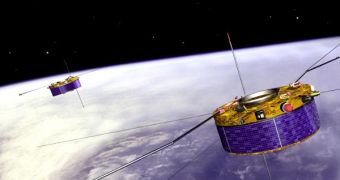For more than a decade, the Cluster constellation of satellites has been keeping an eye on the Sun's influence on our planet, and now, following their anniversary, they will continue to do the same for years to come.
Over the past years, the four members of this group have provided researchers with deep insight into how the magnetosphere protecting Earth from the Sun's dangerous radiation is influenced by these incoming radiations.
One of the main methods researchers used to carry out such studies was programming the satellites to keep an eye on Aurora Borealis, the Northern Lights.
Their frequency, intensity and even color patterns are directly linked to the traits of the solar winds and other Sun-generated particles that slam into the upper layers of the atmosphere.
“Cluster has shown us a previously hidden world of new details,” explains the mission manager for the Cluster mission. Philippe Escoubet.
The constellation itself was launched by the European Space Agency (ESA). All four were launched in 2000 aboard Soyuz-Fregat delivery systems, after ESA lost the original satellites in a 1996 rocket failure.
“We are doing astrophysics close to home. Beyond the solar system is an enormous Universe, filled with uncountable stars,” says the ESA Director of Science and Robotic Exploration, David Southwood.
“The spaces in between them are full of magnetic fields. Other missions study the objects – the islands in the universal ocean – but Cluster studies the very ocean itself,” Southwood adds.
The Cluster mission is currently scheduled to remain in low-Earth orbit (LEO) until 2012, although mission extension plans exist.
If approved, this would ensure that the formation keeps on flying until at least 2014. The four satellites are gliding in the upper atmosphere in a tetrahedral formation, which enables them to collect highly-detailed information of the magnetosphere.
“As well as understanding the aurora, Cluster has a practical side: it unveils the environment that spacecraft such as navigation and communications satellites are expected to work in,” ESA experts conclude in a press release.

 14 DAY TRIAL //
14 DAY TRIAL //